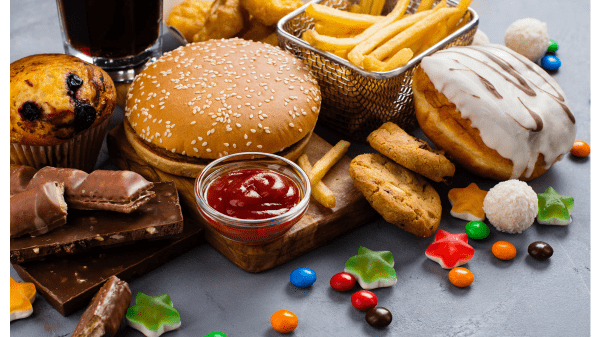An article in The New York Times asks, “In the Ozempic age, has ‘craveable’ lost its selling power?”
In short, with Ozempic and other drugs that are meant to curb food cravings, is it still a good idea to promote a food product with the claim that you’ll want to eat it compulsively?
The article harks back to 60 years ago, when potato-chip giant Lay’s launched an ad campaign featuring comedian Bert Lahr in a wooly red devil suit with the caption “Bet you can’t eat just one!”

Since then, the idea that a food—usually an ultraprocessed food, such as salty snacks—will urge you to eat it compulsively has become an advertising stock-in-trade.
Some say that this trend is passing. The Times article quotes ad executive director Steve Siegelman to the effect that “casting food as irresistible or craveable has already begun to fall out of favor.”
Another element is overkill. Food industry consultant Mike Kostyo observes that overuse has sapped the craving theme of its marketing power, although, he believes, it’s not going away.
One element in this embryonic struggle against craving is academic studies indicating that ultraprocessed snack foods are as addictive as tobacco and gambling.
“Conceptualizing ultra-processed foods high in carbohydrates and fats as addictive substances can contribute to efforts to improve health,” says one new international study.
The researchers also say that ultraprocessed food addiction afflicts 14 percent of adults and 12 percent of children.
There’s even a Yale Food Addiction Scale.
If snack cravings will someday become a thing of the past, they are still very much a thing of the present.
Another survey, from the marketing analysts Acosta Group, says that 32 percent of people snack as a meal, while another 36 percent snack while bored (47 percent of Gen Z). Indeed, stress snacking is highest among Gen Z—at 81 percent.
Snacks include frozen items and sides, granola and cereal bars, protein and nutrition bars, and dried meat or jerky. (Note how many of these items started out as putative health food.)
These findings are relevant to the produce industry because, I believe, ultraprocessed foods are the most dangerous competitor to fresh fruits and vegetables.
It is not merely that consumers reach for a bag of potato chips instead of an apple or banana. It is also that consumer tastes have become geared toward fatty, salty, carbohydrate-rich foods, so that their palates are less drawn to the subtler and more complex flavors of fresh fruits and vegetables.
Maybe the most skillful defense in this context is attack. The Washington Post offers “7 crave-worthy cabbage recipes, including rolls, noodles and salad.”



